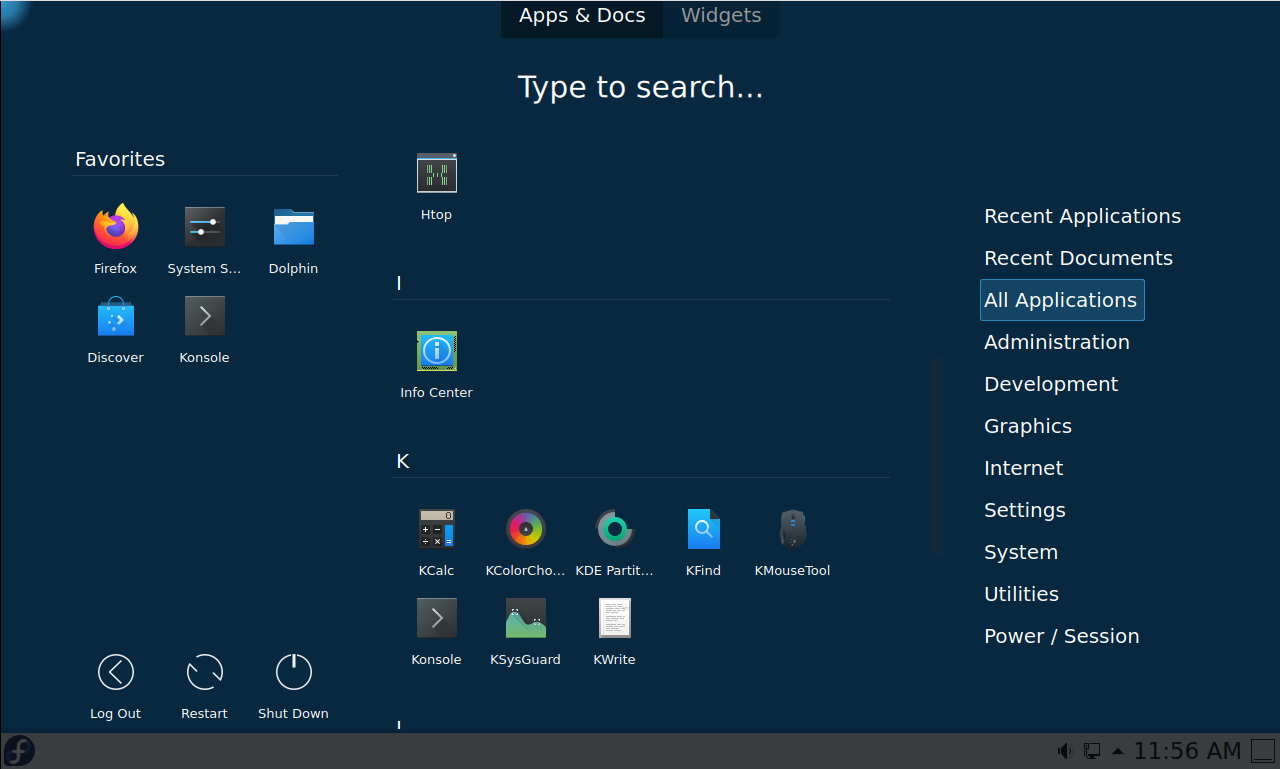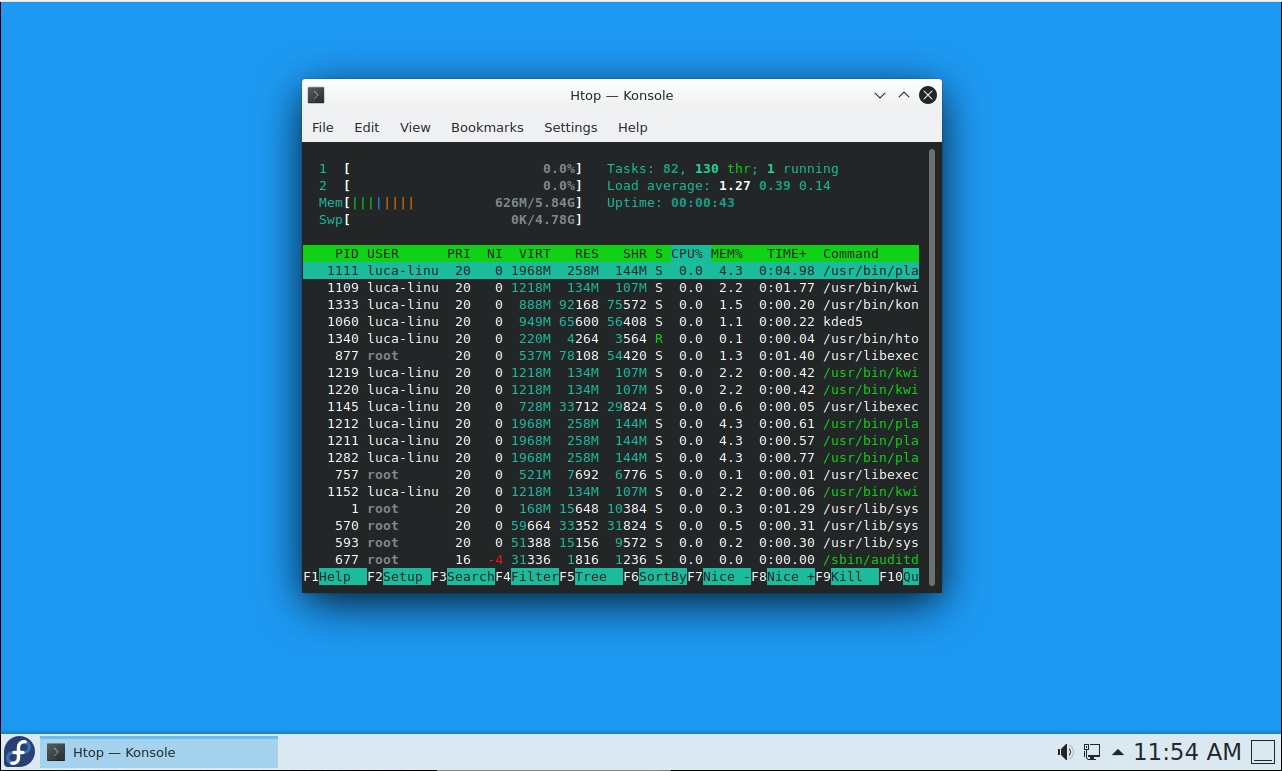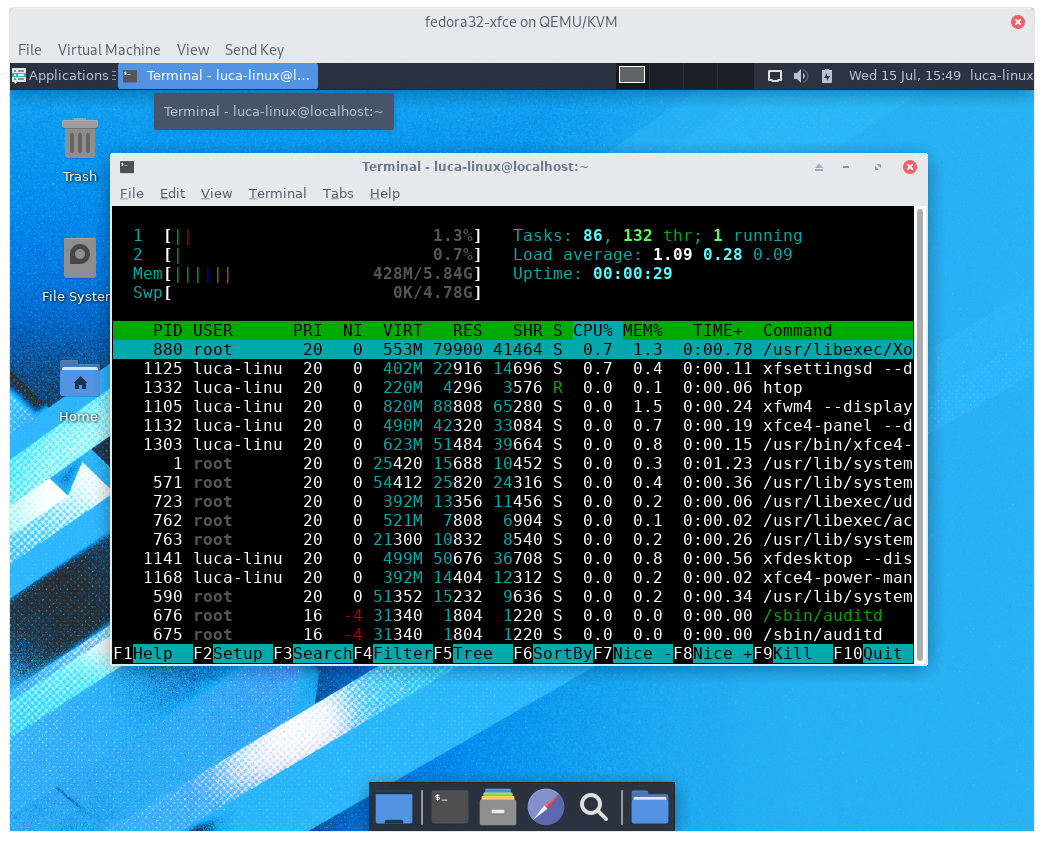Fedora Workstation Minimal
This ansible playbook aims to setup a minimal, yet fully featured, instance of Fedora Workstation starting from a minimal netinstall.
Available DE are:
- GNOME
- KDE
- XFCE
Installing the base system
- Download Fedora Everything ISO Everything ISO
- TESTED ON:
- 32
- 33
- 34
- TESTED ON:
- Prepare Boot Media following Install Instructions
- In the installer under Software Selection, select Minimal Install.
- Create your user and be sure to mark user as administrator
Running the playbook
The best way to run it is from an external machine (the playbook will reboot the machine a couple of times). Be sure you have ssh access to the target machine.
Run:
./install.sh machine_ip --all,gnomethis will launch the ansible playbook. Wait it to finish.
Tags
Available tags are:
- powersave (optional) will tweak the system for laptops and install all powersaving features This has to be explicitely specified to be run
- hardening (optional) will tweak the system for better security This has to be explicitely specified to be run
- kde (optional) this has to be explicitely specified to be run
- gnome (optional) this has to be explicitely specified to be run
- xfce (optional) this has to be explicitely specified to be run
More atomic tags are available:
- archives
- base_distro
- base_packages
- codecs
- gnome
- kde
- rpmfusion
- system_tweaks
- xfce
- zip
Those will only run the specific task ie. for installing only codecs and rpmfusion, etc.
Running
Locally
So to run all the tags (ie. on a laptop we want Powersaving Tweaks), we will run:
./install.sh MACHINE_IP --tags all,powersave,hardening,gnomeAnsible Pull
It is also possible to use this playbook in ansible-pull mode:
ansible-pull -U https://github.com/89luca89/ansible-fedora-minimal -i $(hostname), -c local --tags all,powersave,hardening,gnome --skip-tags reboot -e "ansible_become_pass=$(pass sudo)" main.ymlHardening
It's also possible to specify the hardening tag, this will apply various tweaks to improve system security. This work is inspired from:
- https://dev-sec.io/
- https://www.cisecurity.org/cis-benchmarks/
- https://www.ssi.gouv.fr/en/guide/configuration-recommendations-of-a-gnulinux-system/
- https://apps.nsa.gov/iaarchive/library/ia-guidance/security-configuration/operating-systems/guide-to-the-secure-configuration-of-red-hat-enterprise.cfm
This phase will:
- Disable ssh host-based authentication
- Disable ssh root login
- Disable coredump storage
- Mount with noexec,nosuid,nodev as many mountpoints as possible
- Make /boot and /usr/lib accessible only to root
- Ensure selinux enforcing
- Disable root login on any tty
- Make
subinary not accesible to non-sudo users - Limit max number of concurrent logins per user
- Stricter file/folder persmissions in /etc
- Stricter umask (0027)
- Stricter $HOME user permissions
- Sysctl kernel and net values hardening
- Grub kernel flags hardening
Result:
After install:
rpm -qa | wc -lyelds 1248 packages for GNOME, 1375 for KDE, 1211 for XFCE- process after boot:
- 111 GNOME
- 87 KDE
- 83 XFCE
- about 600~650mb of ram occupied after boot (both GNOME and KDE), ~420mb for XFCE
To be noted:
With a minimal install both KDE and GNOME ram consumption is absolutely comparable, if measured with the same
tool ( htop )
If we measure with gnome-system-monitor it reports a higher RAM usage for GNOME and at the same time,
ksysguard reports much lower RAM usage for KDE, both compared to htop.
So keep in mind that:
gnome-system-monitorover reports ram usageksysguardunder reports ram usage




